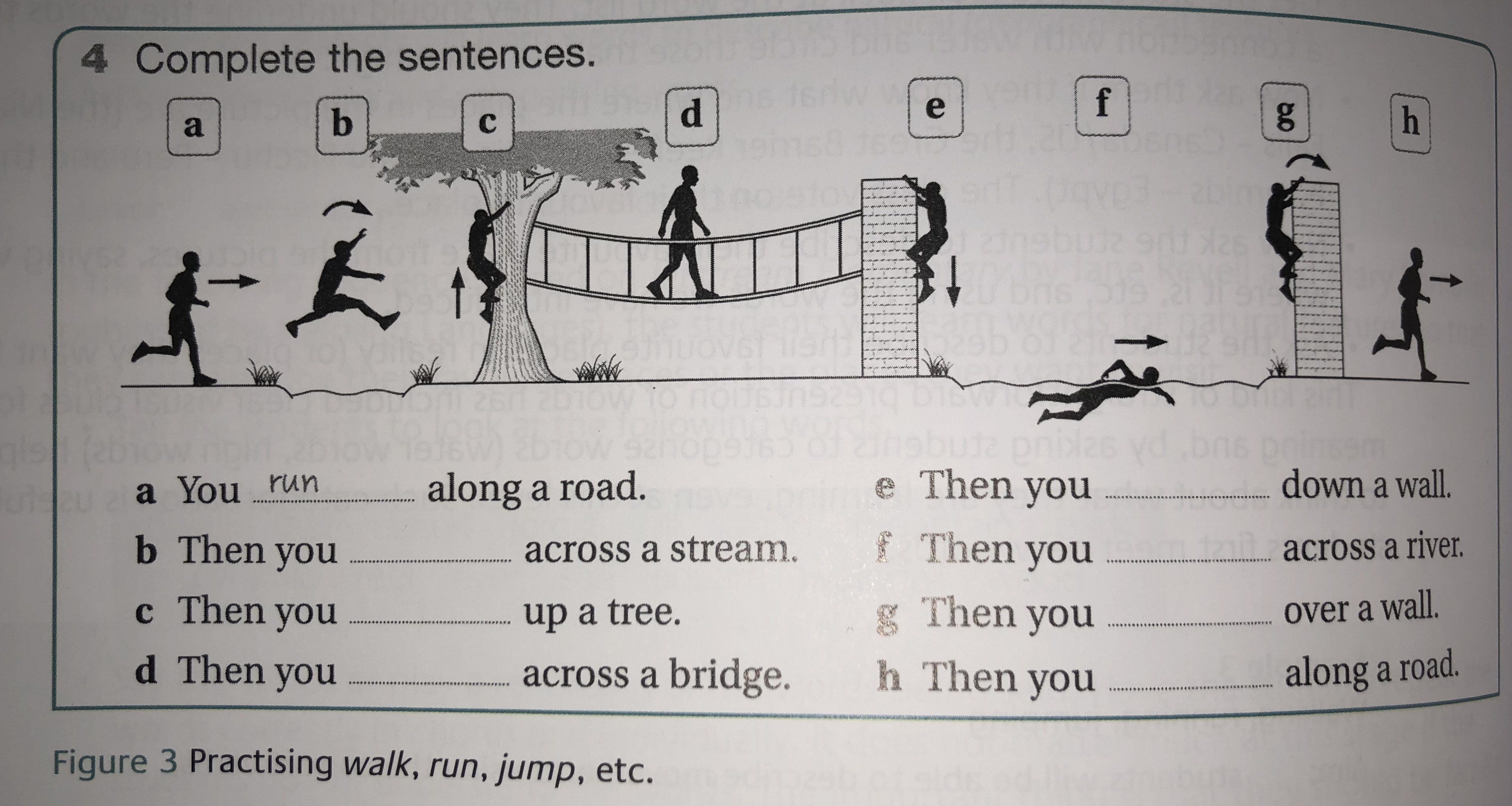Simon says
First, we played “Simon says”. The class stood up and I gave the pupils instructions. If I said: “Simon says….” in advance of one instruction, the class should follow it. If the instruction did not start with the words: “Simon says….”, the pupils should not follow it. If someone followed the instruction at the wrong time, they had to sit down and were out of the game. I used the words I wanted them to focus on for the rest of the lesson (walk, run, jump, swim and climb). I also mimed the actions, so that I was sure all the pupils understood these verbs (and so that they would rather pretend swimming standing up, instead of laying on the floor).
Class robot
Next, we played class robot as suggested by Harmer. The idea was to choose one pupil to act as the class robot and follow instructions containing prepositions. However, I did not present a list of instructions the pupils could use, and the class robot ended up doing 10 push-ups and create a funny dance. We all got a good laugh, but I had to end this activity and bring the attention back to prepositions.
Complete the instructions
Then, the pupils got hand-outs with this task:

(Harmer, 2015, p. 262).
The pupils cooperated in learning couples to solve this task and fill in the blanks.
Draw a map
Finally, I told the pupils to picture themselves in the gymnastics hall at the school and draw their own map with instructive sentences. Each of the sentences should contain a verb, a preposition and a noun. I presented a vocabulary list with words and chunks they could use to create sentences (I did not spend a lot of time on presenting these words. I thought it would be more efficient to learn them through the map-drawing-task, and I expected the pupils to be at least partial familiar with them):

Assessment of the maps:
Before the pupils started working, I told them that the map would be assessed hence to these criteria:
-Write the sentences in English.
-Use short sentences.
-Make sure the drawing is clear and understandable.
-Use verbs, prepositions and nouns.
-Write at least 5 sentences.
The time set aside for the creation of the maps turned out to be too short, and the pupils worried about not fulfilling the criteria. Therefore, I did not care that much about the summative assessment, and gave them instead more formative feedback while they worked. It did not seem fair to assess the maps without giving the pupils a fair amount of time.
Recycling
In the lesson itself, the vocabulary was recycled. If I was to recycle even further, I could give the pupils a text where some of the verbs, prepositions and nouns where included and ask them to color code them. The pupils could also work in pairs, and one of them could get a map of the school yard and the mission to direct the other according to arrows and drawings in the map. Another option is to have them create maps for other situations. They could also take turns in leading the group and playing “Simon says” as I shoved them.
Another possible game could be to ask one pupil to go outside and wait in the hallway, then have another pupil to move around in the classroom. The pupil could go under a desk, walk alongside the window, jump in front of the blackboard, swim behind the curtains and so on (the teacher could say the descriptions as the pupil moves, so that the prepositions are repeated). Then the pupil in the hallway comes in and has to guess: “did the pupil go inside the cupboard? Did the pupil run to the door?” and so on.
A similar task could be to show the pupils a movie of an animal or a person and ask them to write what happens (the cat hides inside of a box, the cat climbs up a wall, the cat jumps down on a mattress). It could be difficult to find a movie that includes the same vocabulary as we worked on, however, this could be convenient since recycling words also mean to discover their reappearance in other situations. In their nature, prepositions certainly do reappear in a lot of different contexts.
Sources:
Harmer, J. (2015). The Practice of English Language Teaching (5th edition). Harlow: Pearson Education Limited.